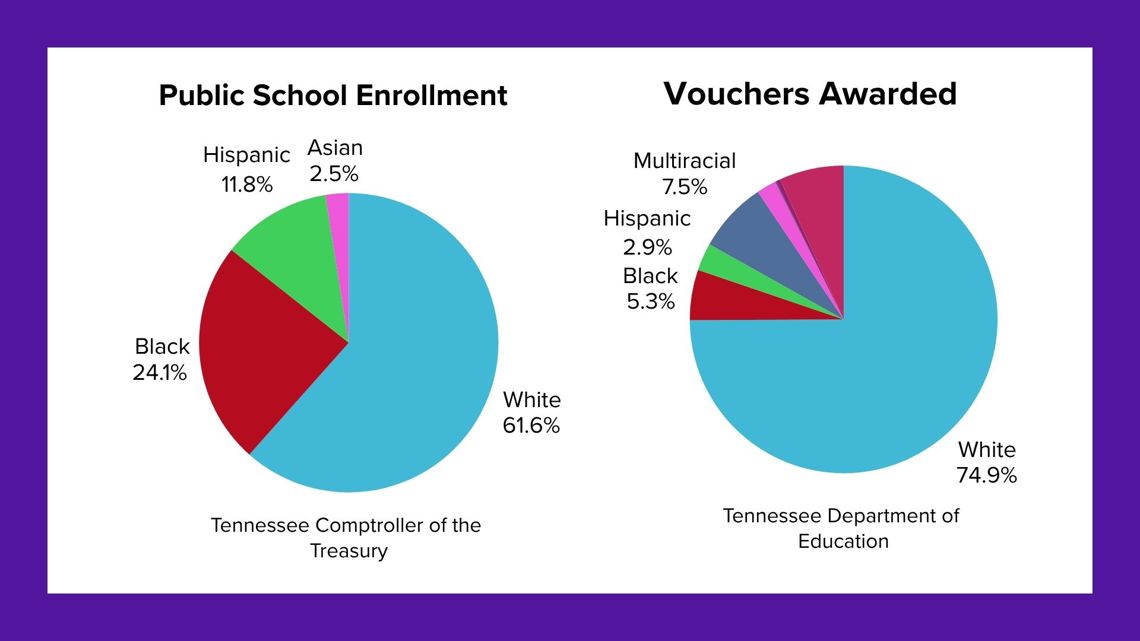
Lawmakers react to new data about expanded school voucher program
Data shows white students received the most vouchers, along with other disparities between the public school population and voucher recipients.
By: Olivia Dague
KNOXVILLE, Tenn. — WBIR requested data from the Tennessee Department of Education that shows students who received Education Freedom Scholarships, or vouchers, were mostly from major cities and wealthy zip codes, and 75% are white students.
In January, legislators approved the program, which provides 20,000 publicly funded scholarships of $7,295.
Data from the state comptroller’s office shows that during the 2020-21 school year, 61% of public school students were white, 24% were African American and 12% were Hispanic.
But among students who received vouchers, 75% were white, 12% were African American or multiracial and 3% were Hispanic.


Wednesday, Governor Bill Lee spoke at an event in Pigeon Forge, and we asked him about these statistics that show data that recipients are more white and affluent than the general public school population in Tennessee.
“What we found in the statistics are just what we expected, which is that half of the vouchers, voucher applications were made by families that are income limited, lower income families,” Lee said. “The goal was to make sure that vouchers are available to all families, but that we prioritize low income families. That’s exactly what happened.”
Data from the TDOE does show applicants were split, almost equally, between qualified income, with around 21,000 applications, and the other 21,000 universal applications, which were open to any family.
Qualifications for an income-based scholarship were that families needed to make less than three times the amount required to get free and reduced lunch. For a family of four, that income comes out to around $173,000.
WBIR asked for more information about applicants’ and recipients’ income, but that was denied. A state spokesperson said: “We do not have records or reports that aggregate income data from applications to fulfill that portion of your request.”
We also brought the statistics to members of Tennessee’s legislators on both sides of the aisle. Rep. Sam McKenzie, a Democrat from Knoxville, spoke about the race disparity. He mentioned that Black students made up 10% of applications and only 5% of scholarships.
“That’s unfortunate at best. Nefarious at worst,” McKenzie said. “If you’re really trying to do a school choice system, that’s not what this is about. This is an attempt to resegregate our schools by race, but more importantly, by the haves and the have-nots.”
We asked Senator Becky Massey, a Republican from Knox County, about the disparities in race, too.
“Obviously, I haven’t drilled down to it like you have, cause I’m right now I’m busy meeting with folks and organizations around Knox County and preparing to kind of get ready to go back in session in January,” Massey said. “AlI I would say is I think it’s gonna kind of filter out after it’s been in place, a couple of years. 68%, of the white population of the state is 70%. So it’s not too far off of demographics of the state. ”